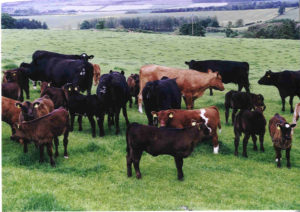Weaning Tips
18 September 2015 After birth, weaning is the most stressful time for both calves and cows. Some tips would be:
After birth, weaning is the most stressful time for both calves and cows. Some tips would be:
- If newly weaned cows are kept outside remember that they will always try and return to their calves whether they are housed or also kept outside. Never graze newly weaned cows across a road from their calves.
- The weaning check will be reduced if cows and calves cannot hear one another. Hence where possible house cows and house their calves on completely separate farm.
- Do not keep newly weaned cows outside where they cannot hear their calves. This will simply mean they will break out and wander in all directions maximising the chaos/problems they cause.
- If cows and calves can be grazed near buildings prior to weaning then wean the cows into the shed and leave the calves in their familiar grazing field.
- Weaning across a very strong fence is often consider to be less stressful to both.
- Some people gradually wean by removing perhaps a quarter of the thinnest cows in each group each week. After a few days the dry cows are returned to a different group. This means that the only change for the calves is the removal of their mother and her milk supply.
- Always give newly weaned calves access to the creep feeder they have been used to and continue feeding the same feed.
- If weaned calves are housed, put the creep feeder into the shed with them. Ideally also begin to trough feed them (so they get used to eating out of troughs). Temporary troughs within the pen, filled by hand will help quieten calves and make them accustomed to humans on foot, associating them with being fed. This would be particularly critical for calves destined to be replacements.
- If weaning occurs indoors have a calf creep area where calves can be fed away from the cows. Calves can then be gradually weaned by shutting them off for a longer period each day over say a 2 – 3 week period.
- If possible introduce calves to forage eg silage for 2 – 3 weeks while they are still with their mothers. The cows will quickly train their calves by example.
Basil Lowman, basil.lowman@sac.co.uk
Sign up to the FAS newsletter
Receive updates on news, events and publications from Scotland’s Farm Advisory Service
